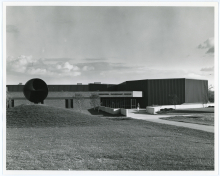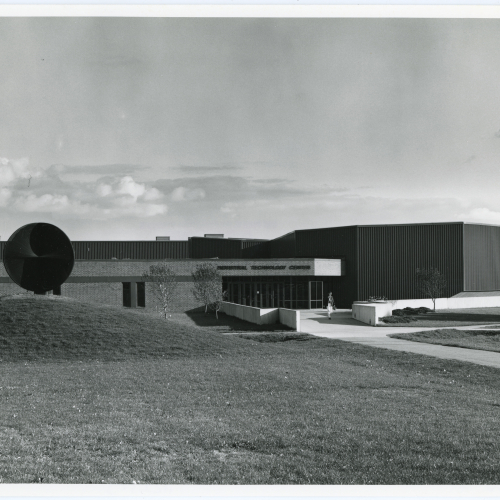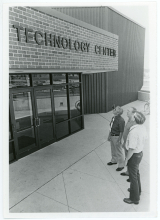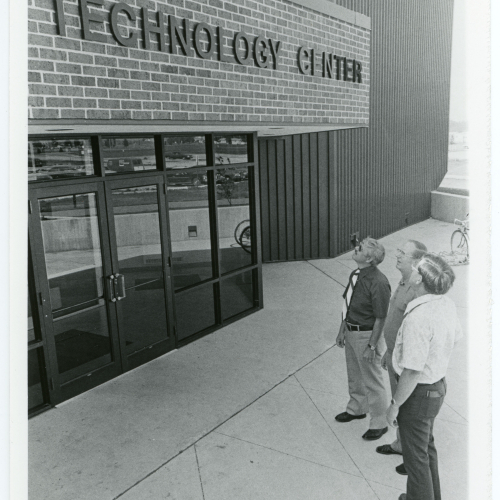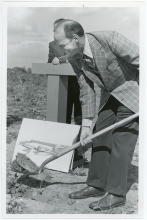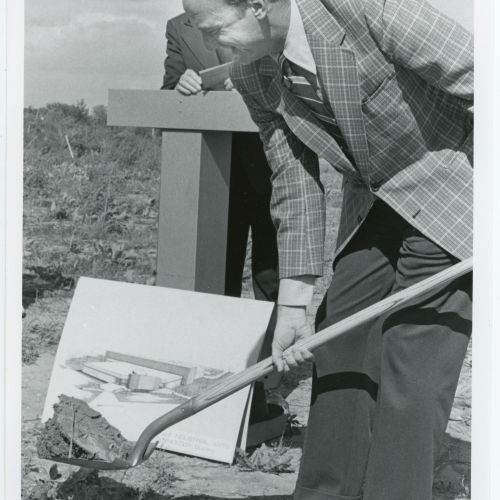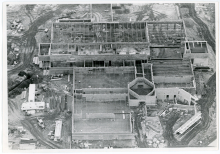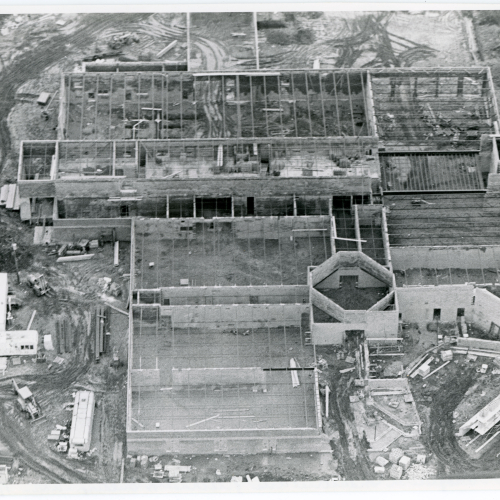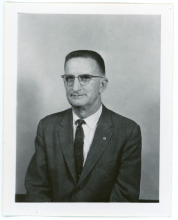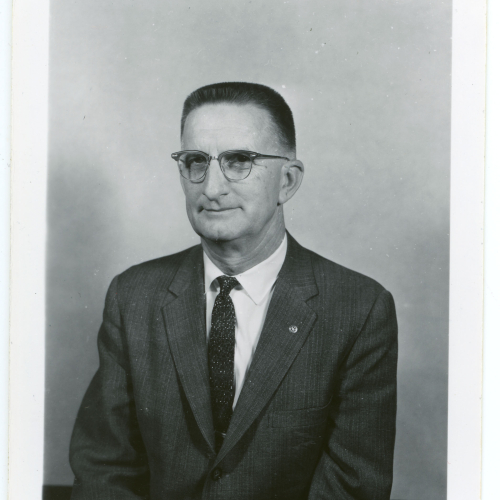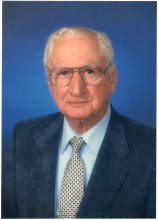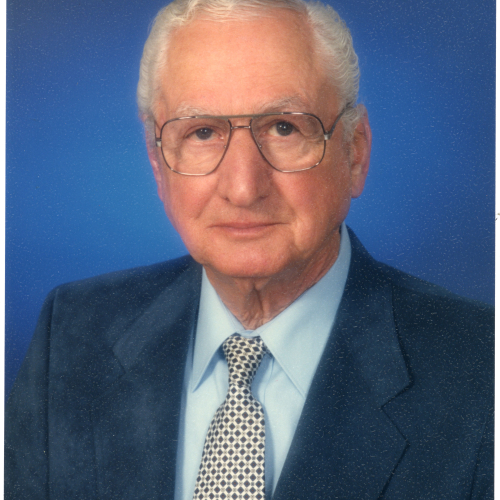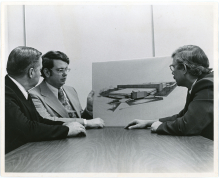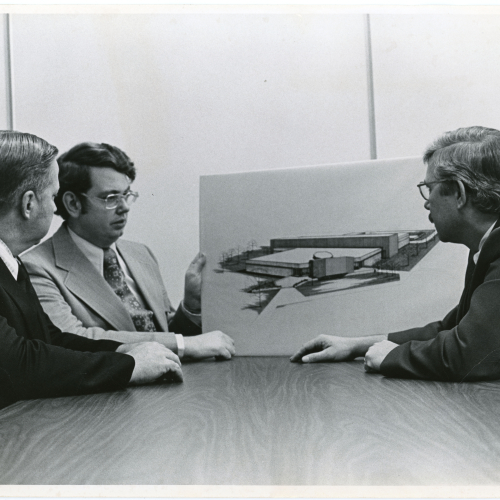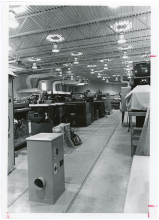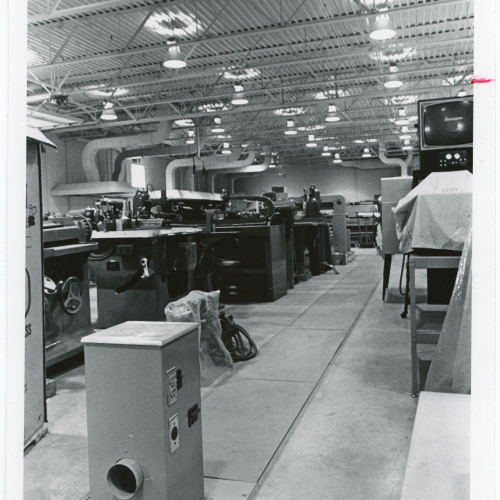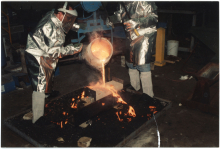Industrial Technology Center (1974)
In September 1968, the Board of Regents approved a capital improvement budget of $9.2 million. Included in that total was $650,000 for an Industrial Arts and Technology Building for UNI. Latham Hall, then known as the Arts and Industries Building, had been home to Industrial Arts classes since 1949. However, space in that building, shared with the Department of Art, was limited and outmoded.
Funding for the building did not materialize quickly. Other projects took priority and construction costs for the project rose to $1.2 million. In December 1972, the building had risen to the top of UNI's capital requests list. In its justification for the project, the university cited lack of faculty offices, classrooms, and laboratory space and pointed out an inability to meet the demands of a rising interest in the program of study. In November of the following year, the Regents approved a $1.3 million budget for the new building. They also approved architectural plans from Stenson and Warm, Inc., of Waterloo with a projected occupancy date of January 1976. The building would provide about 50,000 square feet for the expanding industrial technology program as well as classrooms, laboratories, materials processing and testing rooms, a media center, and faculty offices.
By June 1974, the budget had been revised to $1.6 million, and the university held a groundbreaking ceremony on the site just south of University Avenue. Construction progressed quickly. The Department of Industrial Technology refurbished some of the old equipment in the Arts and Industries Building and moved it to the new facilities by the fall semester of 1975.
Professor Alvin Rudisill, head of the department, stated, "We're moving about $300,000 of equipment, but nothing is being moved until it is completely cleaned, refinished, and repainted." In addition, about $300,000 in new equipment, some of it designed by UNI faculty and students, was set up in the new building.
The new building was a technological marvel for its day. The Wagner Resource Center, named for Willis H. Wagner, a distinguished member of the department from 1945 to 1982, included study carrels, a closed circuit television system, and color videotape players. The television system was linked to most of the classrooms in the building. Students were pleased with their new space. One said, "The whole attitude in the building is more positive." Another said, "It's beautiful, that's all I can think of to explain it."
The 120-seat Reed Auditorium was named for Howard O. Reed, head of the department from 1954 until 1971. It included an advanced control system at the lectern that would allow instructors to use a variety of media. The laboratory space was organized around the principles of power, production, and communications, with advanced equipment in each area.
The university held a dedication ceremony for the Industrial Technology Center (ITC) on April 17, 1976. The celebration included building tours, demonstrations, and an address by Paul DeVore, a nationally recognized leader in the field of technology education. The day concluded with a dinner and dance at the Maucker Union.
Later in 1976, industrial technology faculty showed their pride in the new building by contributing their own money to buy lettering that identified the structure. The building itself had high visibility on University Avenue, and Professor Ervin Dennis, chair of the department public relations committee, said, "We thought the building should be identified . . . We simply wanted people to know we're here." The ten-inch letters could be seen from University Avenue.
The new facilities were considered a national model. A 1977 issue of Power Tool Instructor featured innovative concepts and designs used in the building, such as the Reed Auditorium, the computer system, and the industrial equipment. In late 1990, a 5,000 square foot Metal Castings Lab was added to the southeast portion of the ITC. In May 2004, the student lounge area was named to honor Leland Thomson, former Director of Facilities Planning.
The ITC is home to the Department of Industrial Technology and serves as a center for advanced research related to training, energy, and economic development.
Compiled by Library Assistant Susan Witthoft; edited by University Archivist Gerald L. Peterson, July 1996; substantially revised by Gerald L. Peterson, with research assistance by Rudy Martinez and Julie Wiese and scanning by Gail Briddle, November 2002; last updated, November 7, 2011; photos and citations updated by Graduate Assistant Eliza Mussmann, September 8, 2022; content updated by Graduate Intern Marcea Seible, June 2025.

